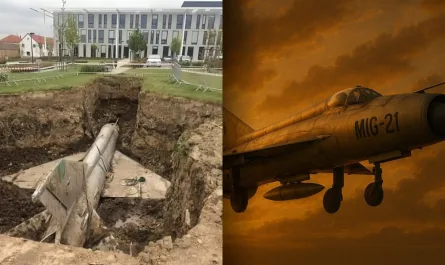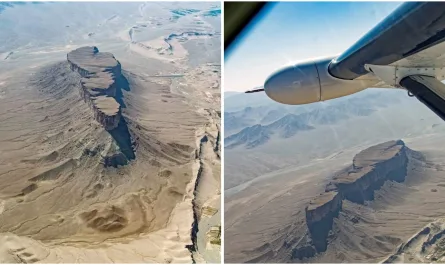The idea that ancient monuments like Angkor Wat, Chichen Itza, Stonehenge, and the Pyramids of Giza were built with help from extraterrestrials has long been a staple of conspiracy theories. A recent meme circulating online takes this notion and turns it into a hilarious commentary, blending iconic architecture with pop culture flair. Let’s dive into this amusing take and explore the monuments—and the theory—behind the laughter.

The Meme That Started It All
This viral image is a clever six-panel meme. On the left, we see stunning photographs of some of humanity’s greatest architectural feats:
-
The sprawling temples of Angkor Wat in Cambodia, a marvel of Khmer engineering.
-
The intricate cityscape of Chichen Itza in Mexico, a testament to Mayan brilliance.
-
The mysterious stone circle of Stonehenge in England, a prehistoric enigma.
-
The majestic Pyramids of Giza in Egypt, symbols of ancient Egyptian prowess.
On the right, the meme features a character resembling Worf from Star Trek: The Next Generation, with the word “HUMANS” stamped across the top four panels. His skeptical expression suggests disbelief that mere humans could have crafted these wonders. The final panel swaps to a character often linked to alien theories (likely from a History Channel show), with “ALIENS” as the caption, cheekily implying extraterrestrials deserve the credit.
The Monuments: Human Ingenuity or Alien Aid?
Each structure in the meme has a rich history tied to human achievement:
-
Angkor Wat: Built in the 12th century by the Khmer Empire, this temple complex showcases advanced hydrology and architectural planning, likely constructed with tens of thousands of workers over decades.
-
Chichen Itza: This Mayan city, peaking around 600-1200 CE, features the pyramid El Castillo, aligned with celestial events—a feat of astronomy and engineering.
-
Stonehenge: Erected between 3000-2000 BCE, this prehistoric monument involved transporting massive stones over long distances, a mystery solved by evidence of Neolithic tools and community effort.
-
Pyramids of Giza: Constructed around 2630 BCE, these tombs for pharaohs relied on ramps, levers, and a workforce of skilled laborers, not slaves as once thought.
Archaeologists attribute these to human innovation, using tools like copper chisels, wooden sledges, and sheer determination. Yet, the meme taps into a counter-narrative that these feats seem “too perfect” for ancient technology, fueling the alien hypothesis.
The Alien Conspiracy: Fact or Fiction?
The idea of alien involvement gained traction through shows like Ancient Aliens, which speculate that extraterrestrials shared knowledge with early civilizations. Proponents point to the precision of these structures, their alignment with stars, or the sheer scale as evidence. However, scholars counter that these can be explained by human observation, trial-and-error, and cultural priorities—like honoring gods or marking seasons.
The meme’s humor lies in its exaggeration. Worf’s repeated “HUMANS” mocks the skepticism toward human capability, while the “ALIENS” reveal pokes fun at the leap to extraterrestrial intervention. It’s a lighthearted nod to a debate that’s more about imagination than evidence.
Why We Love the Meme
This meme works because it blends respect for ancient achievements with a playful twist. The Star Trek reference adds a sci-fi layer, resonating with fans who enjoy both space exploration and historical mysteries. Shared widely on platforms like X, it’s sparked laughs and debates, with some users joking about “alien contractors” and others defending human grit.
Conclusion
The alien conspiracy meme is a fun mirror to our fascination with the past. While the monuments stand as proof of human potential, the idea of alien help adds a whimsical “what if” to the story. Next time you marvel at Angkor Wat or the Pyramids, you might chuckle at the thought of Worf rolling his eyes—or an alien architect leaving the blueprints behind. Whether you buy the theory or not, it’s the curiosity that keeps these wonders alive in our minds.





